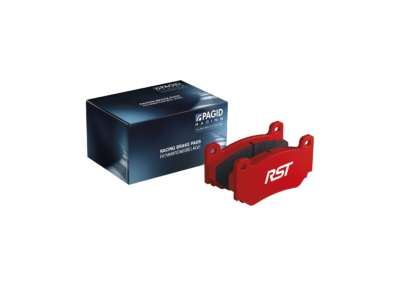Operating temperature is an important consideration when choosing brake pads for racing applications.
Brakes seem to be a simple enough thing. A driver presses the pedal that pushes the fluid that activates the caliper that pushes the pads against the disc that slows the car, producing heat as a byproduct. But there’s a lot of science and engineering in that fluid, in those discs and, most certainly, those pads.
The current array of options in brake pads, from high performance street pads to those designed for pure racing applications, is mind-boggling. Different materials, different uses, different lifespans and different friction all come into play when choosing the proper pad for your use. There are several criteria to consider when selecting a brake pad, but let’s focus on one for now: temperature.
While many automotive systems aren’t particularly welcoming to heat, the brakes usually need a little to produce maximum torque to slow down the car. But there is also such a thing as too much, which is why rotors have vanes and most race cars use ducts to bring cooling air to the brakes. Manufacturers make a wide range of pads designed to work in a wide range of temperatures, so understanding temperature is important.
“I’ve had people in the past that thought they had a brake problem and they kept ramping up and up to a more aggressive pad with a higher temperature capacity,” explains Ian Berwick, Pagid Racing’s Application Engineer. “They don’t realize that the brakes weren’t hot enough to use that pad. They’d get the shudder and the shaking and uneven pad buildup, the shimmy going into the braking zone, and think they’re overheating the brakes. The reality is they never got the brakes hot enough to bed the pads in properly.”
For that reason, just as you might do with tires, Berwick recommends taking the temperature of your brakes. And it needs to happen quickly, because the brakes can cool down rapidly; anything more than a minute after coming off track is probably too late. A crewmember with an infrared temperature gun can accomplish this. Even if the infrared guns aren’t accurate, even at 10 percent off, they’re going to get you in the ballpark.
Perhaps the easiest way, though, is to measure the brake temperature on the racetrack, and that doesn’t require fancy, expensive data acquisition.
“The best way, in my opinion, is the three-color paint system you can buy for brakes. They’ve got green, orange and red, and when the paint gets to that temperature, it turns white. It’s the easiest system in the world to work with. If you’re not burning the green off the rotors, you probably don’t need even a racing compound; a high-performance street pad will suffice,” says Berwick.
It’s all part of choosing the right brake pad. As you figure things out, you may want to stagger the brake pads front to rear to adjust the braking torque at each end; but that’s something we’ll cover in a later feature. For now, you need to be close before you worry about fine tuning.
“The key is to get something that works for the type of application,” says Berwick. “Street pads and race pads are not the same animal. High performance street guys are not going to be happy with race pads. Race pads are for racing use, where you don’t care about [noise, vibration and harshness] issues, you don’t care about noise. Generally a racing pad is not suitable for street use.”
And in some cases, a race pad isn’t suitable for racing use. It all depends on the car, the track and the driver. In many cases involving production based cars, high performance street pads will be all you need, and not only will they save you money, they’ll be easier to bed in and will give you full torque at lower temperatures. Temperature is an important component in choosing a brake pad, but certainly not the only one. In the next few weeks we’ll explore some others on MazdaMotorsports.com, including looking at splitting the braking friction front to rear.


 ACCESSIBILITY
ACCESSIBILITY